Venice- Casanova ;
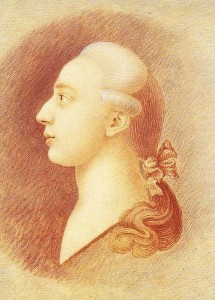 Giacomo Casanova (1725 – 1798) citizen of the Republic of Venice , adventurer,writer , poet, alchemist , diplomat, philosopher and Italian secret agent .From him remains a vast literary production , but his name became synonymous with the seducer due to his book “Histoire de ma vie “( Story of My Life , French was the international language at that time), where the author describes his adventures.
Giacomo Casanova (1725 – 1798) citizen of the Republic of Venice , adventurer,writer , poet, alchemist , diplomat, philosopher and Italian secret agent .From him remains a vast literary production , but his name became synonymous with the seducer due to his book “Histoire de ma vie “( Story of My Life , French was the international language at that time), where the author describes his adventures.
The image of an erotic Venice , which has seduced by her charm ;lovers and libertines ,who arrived here from every corner of Europe to consume their passions, had been handed down since the eighteenth century.
What we propose you is a beaten path , discovering the places frequented by one of the most renowned and representative eighteenth-century character; from an luxurious , decadent and libertine Venice .
Giacomo Casanova was born in Venice .
His father was Gaetano Casanova , an actor and dancer ;the mother Zanetta Farussi , Venetian actress with a high success rate . Carlo Goldoni in his memoirs , called her ” a very beautiful and very talented ….widow.”
When his father died, and with his mother constantly on the road for her profesion ,was grown by his maternal grandmother . As a child in poor health , his grandmother took him to a “witch”, who seems to manage to heal the disorders from which he was suffering, performing a complicated ritual. After that ,the child’s interest in the magical practices
accompanied him throughout his life.
 Giacomo Casanova , born in Calle della Commedia ( now renamed Calle Malipiero,where can find a commemorative plaque ) in a building close to the Palazzo Malipiero ,
Giacomo Casanova , born in Calle della Commedia ( now renamed Calle Malipiero,where can find a commemorative plaque ) in a building close to the Palazzo Malipiero ,
who was attended by him assiduously since 1740 ,and being confident with the Senator Alvise Gasparo Malipiero the second .Here he had the opportunity to weave a first set of relationships with authority figures and with a good number of ladies, until the
authority figures and with a good number of ladies, until the
day when he was caught in the company of Teresa ( the young woman of whom was in love Alvise ), another reason to be chased from Venice.
After the death of his grandmother, and the sale of the expensive house from” Calle della Commedia”; in the year 1743 we find him arested ,as a result of his (rather turbulent) conduct, in the Fort of St. Andrew ,from the end of March to the end of July. More than the application of a penalty , it was a warning that try to correct the character.
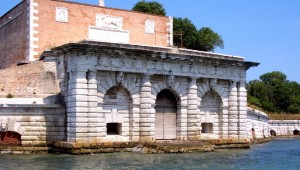 The “Fort of Sant’Andrea” is a fortress built at the half of the year 1500 ,on the ruins of an earlier defensive building; now in ruins,was an important part of the defensive system of the lagoon of Venice.
The “Fort of Sant’Andrea” is a fortress built at the half of the year 1500 ,on the ruins of an earlier defensive building; now in ruins,was an important part of the defensive system of the lagoon of Venice.
During his second stay in Ancona (During the first was forced to “pass” the quarantine on the Lazaretto island , where he had had an love affair with a Greek slave ) Casanova had one of his most ” strange adventures” : fell in love with a self-styled castrated singer, Bellino , convinced that it was actually a woman . But Casanova sighed of relief when find out what he hoped : the gelding was actually a girl, The orphane Teresa , was posing as a gelding and singing in the theaters of the Papal States , where it was forbidden the women performing.
 Palace Merati on “Fondamente Nove”, (in the building that now belongs to Emile Targhetta D’Audifret) , lived the mother and the sisters of Casanova.In this rich apartment , where he lived when he returned to Venice after receiving the grace , we can find the alcove complete with a bed canopy where the famous seducer consumed his nocturnal adventures with
Palace Merati on “Fondamente Nove”, (in the building that now belongs to Emile Targhetta D’Audifret) , lived the mother and the sisters of Casanova.In this rich apartment , where he lived when he returned to Venice after receiving the grace , we can find the alcove complete with a bed canopy where the famous seducer consumed his nocturnal adventures with  the Venetian ladies .
the Venetian ladies .
He then returned to Venice, for a time he earned his living by playing the violin in the theater of San Samuele , properties of the noble family, Grimani ,(at his father’s death , which occurred prematurely (1733), Grimani’s had officially taken the protection of the boy , supporting the popular rumor according to which one of the Grimani , Michael, was the true father of Casanova).
The theater San Samuele in Venice was one of the most prestigious theater among those active in the lagoon’s city .During the XVII sec , the Venice City Council bought it , demolished it ,in 1894 and built a school in that area .
For lunch we racommend you to go towards Rialto,where, just down from the bridge will find “sotoportego the Do Mori” and you can make a stop in the homonymous tavern, where, since the year 1500 preparing typical Venetian foods that you can taste, with a delicious “Malvasia”, just like used to do Casanova, when stops here and wait for his lovers or chat with the customers. Continuing towards the fish market, you could stop at the ancient restaurant Poste Vecie, (opened in the year 1500), where, Casanova passed lot of time too.
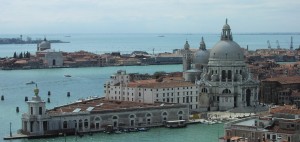 Next to the church “Della Salute” is built a convent , (also designed by Longhena) , where , in 1742 Casanova studied physics.
Next to the church “Della Salute” is built a convent , (also designed by Longhena) , where , in 1742 Casanova studied physics.
In 1746 he became friend of the Venetian patrician Matthew Bragadin . “Struck by an illness , the nobleman was rescued from Casanova and became convinced that his life was saved, thanks to the timely intervention . As a result began to consider Casanova almost like a son , protecting him , as long as he lived. Casanova came in contact with the two brotherly friends of the Senator : Marco Dandolo and Marco Barbaro ,who also became deeply attached by him and “as long as they lived , they held him under their protection” . The association with the nobles attracted the interest of the Inquisitors of State and Casanova , on the advice of Bragadin , left Venice waiting for better times.
Younger son of Andrea Bragadin , belonged to a family of Dalmatian origin , one of the four so-called evangelical families( Bembo , Bragadin , Corner, Giustiniani ) the ancient nobility of Venice. Along with older brother Daniel (1683-1755 , Procurator of San Marco in 1735 ) inherited the fortunes of the family and it was the last descendant .
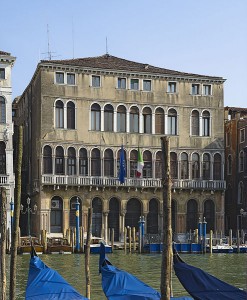 The Barbarian was one of the most important noble families of Venice.
The Barbarian was one of the most important noble families of Venice.
Among the most famous members of the family there were many humanists. They were the patriarchs of Aquileia between 1491 and 1622.
The Chronicles trace the Dandolo family with ancient origins in Altino city , a branch of the Roman gens, Ursia , which were connected with Theodatus Ipato , the third  and fourth doge of Venice (Maritim Republic) , as well as the other major Ducal family of Orseoli , reigning between the second half of the tenth century and the first half of the eleventh century.
and fourth doge of Venice (Maritim Republic) , as well as the other major Ducal family of Orseoli , reigning between the second half of the tenth century and the first half of the eleventh century.
In June of 1750, in Lyon, Casanova joined the Freemasons, like many people present in his life ,(Mozart and Franklin were certainly Freemasons) .
Returning to Venice after a long stay in Paris and other trips to Dresden , Prague and Vienna, in the night between the 25th and July 26, 1755 , he was arrested and confined in the ” Piombi” prison.The charge wasn’t notified , but it was clear the danger of the possible elimination by the inquisitors , who were the special court and central espionage too.
At this is also added the scandalous relationship entertained with ” Nun MM” , (certainly belonging to the nobility ),nun in the convent of S. Maria degli Angeli in Murano, and lover of the French Abbe , de Bernis .
 ( From Venice ACTV watrbus number 3 (direct) , 4.1 and 4.2 to Murano)
( From Venice ACTV watrbus number 3 (direct) , 4.1 and 4.2 to Murano)
The church Santa Maria degli Angeli is just a few minutes walk ,from the bus stop Murano Venier .On this island hapened one of the most legendary adventures of the seducer : the love affair with MM, a mysterious nun of the convent of Santa Maria degli Angeli in Murano island. Here you will (still) find the wooden bridge and the door of the convent where the nun came out , accompanied by a young lady , both lovers of Casanova, who was waiting in a gondola, in the dark of the night , hidden his identity behind a mask .
From that place, ” witness for secret meetings” , today remains only the uninhabited and the crumbling of the austere convent and the church , with the wellhead in the garden, hid in the tall grass .But the atmosphere of mystery and solitude wich still reigns around there will take you back in time, igniting your imagination …
As soon as he recovered from the shock of the arrest, Casanova began to organize his escape. A first attempt was a shift of the cell. During the night of 31 October and 1 November 1756 , moving from cell to the attic through a hole in the ceiling practiced by a companion , climbed on the roof and then lowered himself back inside the palace by a skylight . They moved on ( together with the accomplice ) through various rooms ,being noticed by a passerby (who thought they was visitors locked inside ).So, called one of the attendants who opened the door , allowing the two to get out and go away in a gondola .
Piazza San Marco, elegant square with its cafes and its hidden corners has been the scene of many erotic adventures of seducer.
The coffee bar Florian, founded in 1720th was attended by Casanova but also by other famous characters as Byron, Goete, Richard Wagner, Charles Dickens, Woody Allen.
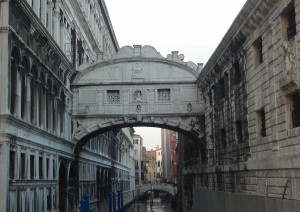 In the back of the square on Calle Vallaresso , you can find that once was the gambling house (the famous Reduced ), today part of the Hotel Monaco & Grand Canal , where Casanova,hide behind a mysterious mask , spent many hours gambling in the company of Venetian noblemen ,waiting for one of his gallant
In the back of the square on Calle Vallaresso , you can find that once was the gambling house (the famous Reduced ), today part of the Hotel Monaco & Grand Canal , where Casanova,hide behind a mysterious mask , spent many hours gambling in the company of Venetian noblemen ,waiting for one of his gallant  meetings .Before leaving the square, we suggest you a visit to the , terrible prisons (i piombi-Leads ) which is accessed through the Bridge of Sighs , where Casanova was sentenced to 5 years’ imprisonment, but from which he escaped through a hole in the ceiling.
meetings .Before leaving the square, we suggest you a visit to the , terrible prisons (i piombi-Leads ) which is accessed through the Bridge of Sighs , where Casanova was sentenced to 5 years’ imprisonment, but from which he escaped through a hole in the ceiling.
Returning to Venice after eighteen years he proposed himself to the Inquisitors as a spy , in favor of those that once were determined to sentence him to imprisonment . But the Casanova’s “information” weren’t particularly interesting ,and collaboration wearily dragged and interrupted for ” poor performance .”
During this period, he dedicated himself to writing and began a relationship with Francesca Buschini , a very simple and uneducated woman.
 The apartment occupied by Casanova and Buschini ( today property of the noble family of Pesaro at S.Stae NA 6673 ) , corresponds to the three windows of the third floor located under the attic, which is seen in the upper image.
The apartment occupied by Casanova and Buschini ( today property of the noble family of Pesaro at S.Stae NA 6673 ) , corresponds to the three windows of the third floor located under the attic, which is seen in the upper image.
From Fondamente Nuove towards Campo San Maurizio (ACTV waterbus stop Santa Maria del Giglio): in this field with the recognizable san Maurizio church and the leaning tower,in the building on the right,( now the office of the Azione Catolica), lived  the Venetian erotic poet George Baffo, who exerted a profound influence on the young Casanova,to start the art of seduction and who was a great admirer of Casanova’s mother, (niknamed La Buranella).Baffo accompanied Casanova during the his first trip to Padua wherry to discover the pleasures of the world.
the Venetian erotic poet George Baffo, who exerted a profound influence on the young Casanova,to start the art of seduction and who was a great admirer of Casanova’s mother, (niknamed La Buranella).Baffo accompanied Casanova during the his first trip to Padua wherry to discover the pleasures of the world.
…so ,from Fondamente Nuove to Murano,then back to Campo san Maurizio,the first itinerary; then from Rialto to San Marco ;and the third a splendid trip on canal grande (bigchannel) one of the symbols of the city ,where, alongside the entire length, you can see magnificent buildings, most of them builded between the twelfth and eighteenth centuries, very familiar places to Casanova.
other items http://dipoco.altervista.org/
visit my website http://ginocosta.altervista.org/
